Spinoffs are a funny thing – sometimes they do so well they get spinoffs of their own. Rune Factory, originally a spinoff of Story of Seasons, is now getting its own spinoff (kind of) in Silent Hope, a roguelike action rpg that eschews nearly all of the agriculture in favor of loot and tough as nails grinding. And for such a deviation from Marvelous’ usual farming fare, it provides a solid experience to while away in, even if more than a few blemishes line its surface.
The game’s sheer premise provides one of its more interesting (and original) aspects – a king has stolen all the words of his kingdom’s inhabitants, plunging deep into an abyss and leaving the denizens silent. His daughter, the princess, cried for so long that she became encased in a crystalline teardrop – but when all seems lost, hope arrives in the form of seven heroes, who will plunge into the abyss in pursuit of the king, attempting to unravel the mystery of his actions.
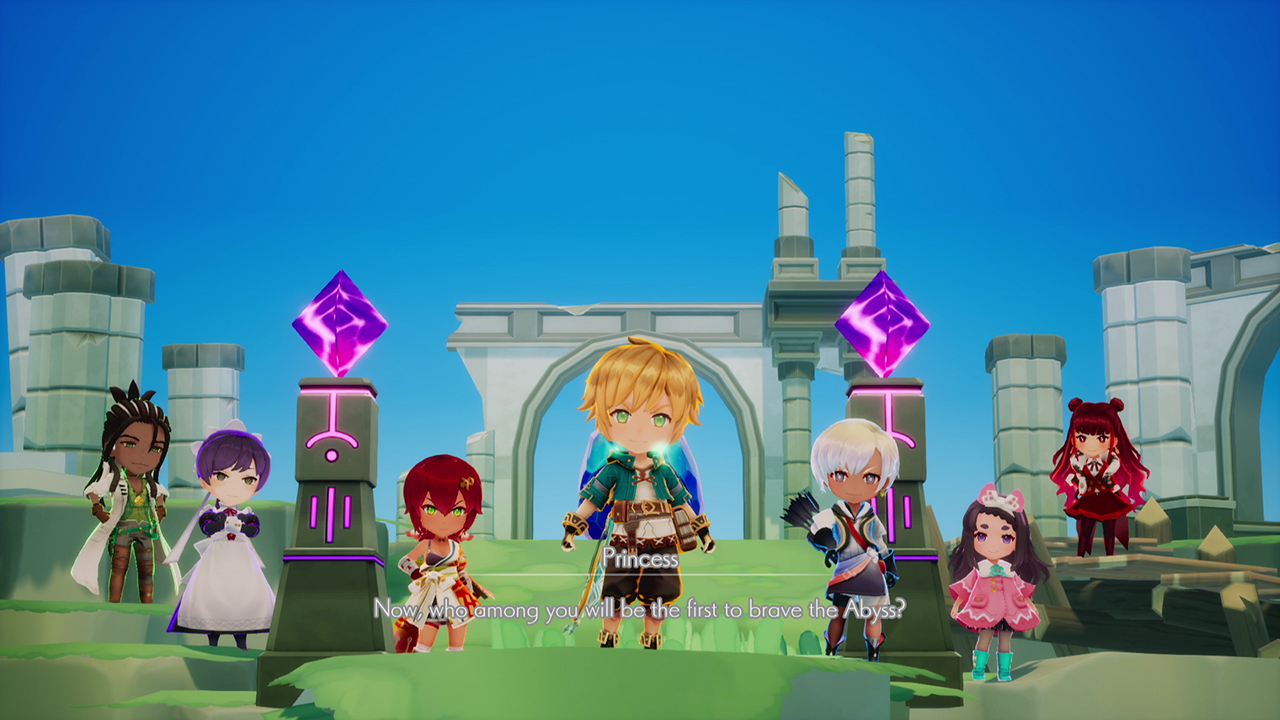
The plot has a fairy tale like air to it, and while relatively thin the piecemeal info you find on steles throughout the abyss make for steady storytelling. The princess, voicing basically all the game’s lines, manages to strike a range – imploring yet endearing, sweet but suffering. While she talks enough in base camp that it eventually goes in through one ear and out the other, you can’t fault her for lack of enthusiasm. The story is pretty barebones, but inoffensively so in a game this action-focused.
What feels more lacking is characterization. The game’s seven heroes all have fantastic designs and unique movesets – but the game’s core premise renders them mute, and thus any potential for memorable interactions or lines is unfeasible. There are other ways to characterize beyond simple words, of course, and the game does try with their little animations and battle cries here and there. But it feels like such a missed opportunity when so much of its cast looks and plays in distinct ways.
Those visuals really are the highlight of the whole thing, and a great deal of what got me to notice the game in the first place. Monster designs are cute and expressive, backgrounds are colorful and detailed, and as mentioned the characters’ looks are fantastic and diverse. Even the UI scratches the itch in my brain with its geometric runes. The music is enjoyable if rarely standout, and the voice acting is excellent for its sparseness, but the game would earn top marks for aesthetics on visuals alone. I need this team to design the look for every other anime style RPG in existence now.
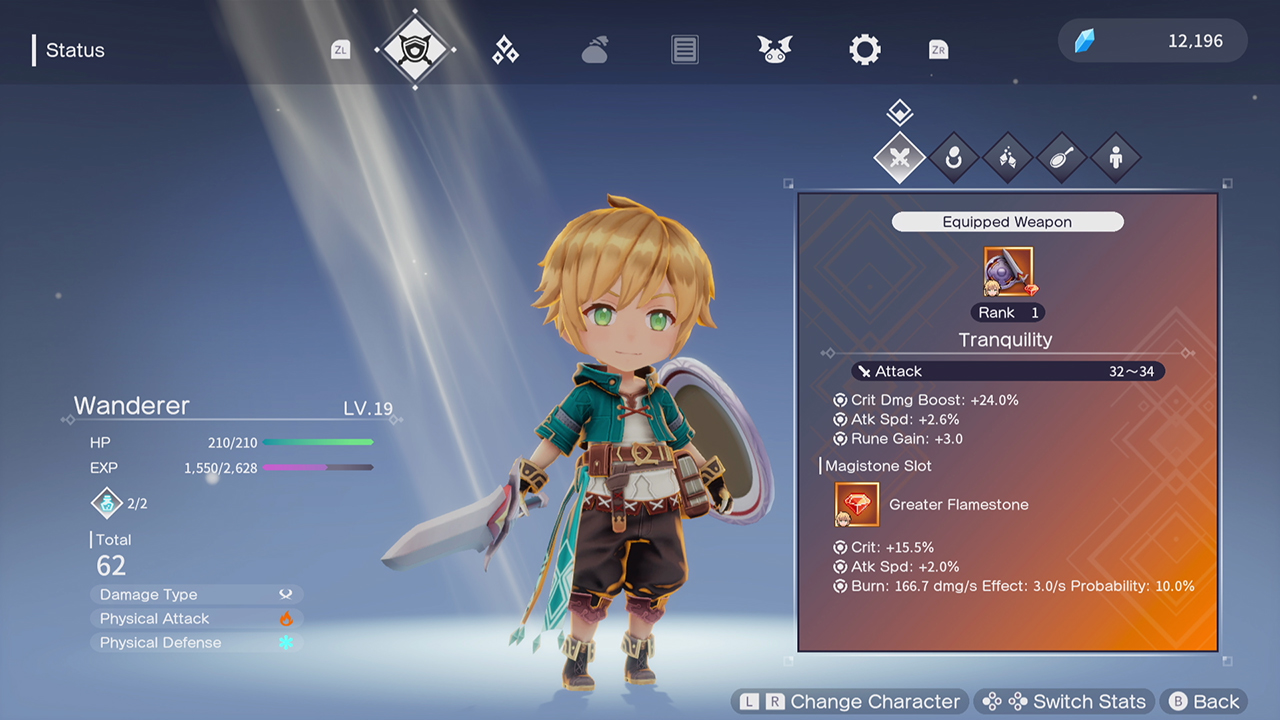
Of course, visuals alone can’t make a game good, and fortunately Silent Hope gets the base foundation for its genre mix-and-match mostly right. The core gameplay is an interesting cross between Diablo and a Mystery Dungeon title – you’ve got countless floors of spelunking that are randomly generated in layout and enemies, meaning no two trips to the abyss are the same. Your character has simple one-button combos as well as three skills on cooldown, and each of them vary in attributes and abilities. The Warrior is slow but swings broadly and powerfully, the Archer can attack precisely from a range, the Fighter deals rapid fire short range blows, you get the idea. The only class that isn’t a tried and true RPG archetype is fittingly the Farmer, a unique buff/debuff based combatant with a pretty variable loadout and the greatest character design ever made (those eyebrows…)
What’s nice is that the game is designed to incentivize using all seven characters but doesn’t force the issue. Swapping characters at mid-dungeon crystals grants whoever you’re switching to a special buff, and the more you swap at, the more buffs you get. This is naturally balanced by having to split experience as many or as few ways as you see fit. It’s rather difficult to solo the entire game (simply because characters only get two health potions a run and seldom ways to replenish them besides swapping to a fit friend), but it’s more than reasonable to run through the whole thing with three or four preferred heroes. I used all seven in my runthrough, and while managing them all was tasking, I enjoyed each one of their playstyles without fail. Not a single one felt truly unsatisfying to control. I honestly find that remarkable.
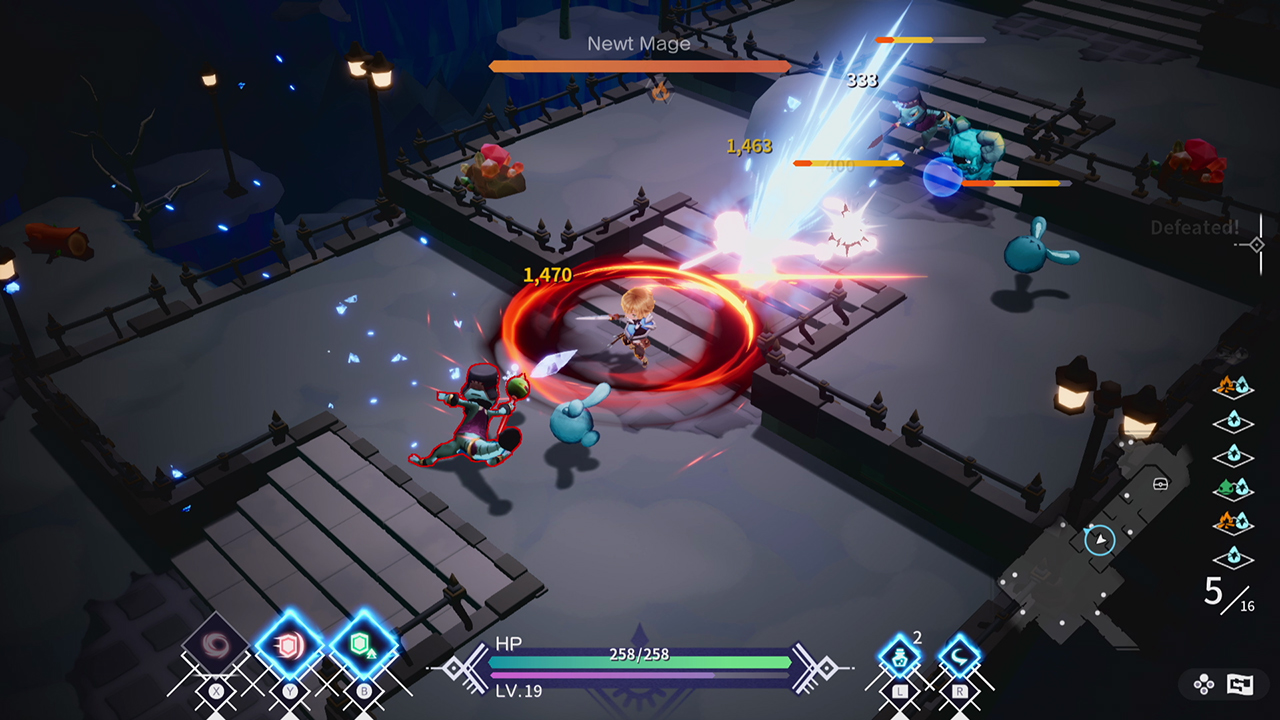
The wrinkle that keeps Silent Hope running is its Base Camp. You can craft equipment and cook food to assist on your adventure, but refining materials takes time and effort – you can’t just turn your Iron Ore into a sword without smelting it first, after all. While the actual crafting and cooking is instantaneous as a compromise, it requires planning and consideration if you want to outfit yourself properly. This forms a core gameplay loop: set some materials to craft, make a run through the abyss, return, use those materials to make shiny new stuff, rinse, repeat. And you have incentive to keep your crafting stations churning, because the game’s loot system means you’re always finding new gear to build. Yeah you’ve already got Silver Daggers, but these ones boost the stats of your favorite skill, making it even deadlier. It’s all awfully rudimentary, not even close to RF or SoS’ farming sim elements, and I do wish it was a bit more involved. But as a counterweight to the action gameplay it serves its purpose. Seems like all’s in order, then?
Well, everything is pretty smooth for the first half of the game or so. Towards the end of the third “floor” (stratum, really), the game really begins ramping up the difficulty, requiring a greater coordination of gear and allocation of resources. You lose quite a few of your run’s accumulated resources if you die rather than return safely to Base Camp of your own accord, so an unlucky break can really set you back – not to mention you can’t really tell how good a piece of equipment is until you go back. It can leave you in a position where you need better stuff to progress, but no means to acquire it easily as drops are so random, forcing you to butt your head against the wall until something gives. Is your favorite character the Wayfarer? Well you better hope that good weapons with the right attributes drop for him instead of the Caster who you’re not as versed in. While the spice of not always getting what you want can ask you to adapt and form new strategies, it can also leave you in a cycle of grinding either intentional (farming certain floors to gather materials and return) or unintentional (accumulating bits and pieces as you attempt the same challenge over and over again).
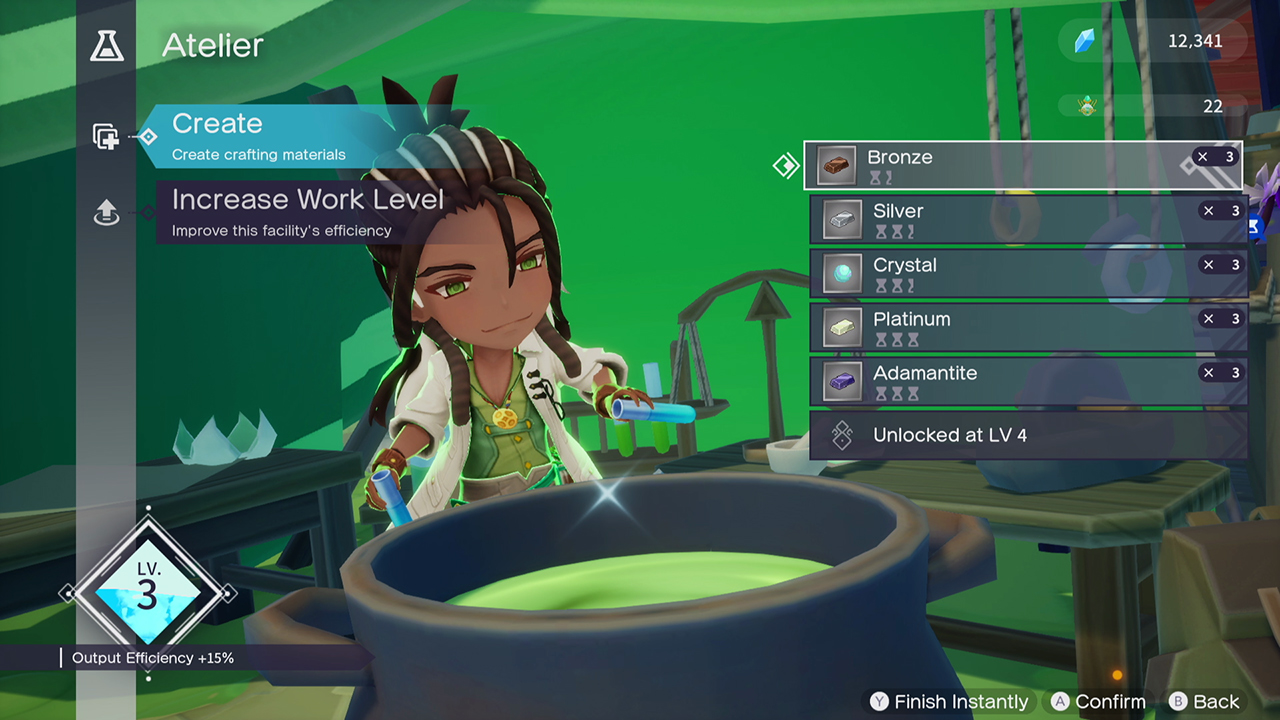
The bosses are a particularly sore spot in this regard. The first couple are more than manageable, but the third offers a severe difficulty spike that will require a coordinated team plan and skillful play to conquer. The succeeding ones aren’t any easier. What makes the bosses particularly painful is that the closest abyss checkpoint is always several floors above them, meaning you can’t easily retry them but have to trek through the last (toughest) leg of an area to just reach them in the first place. This can be helpful in gathering resources, but it makes every loss you’ll suffer particularly demoralizing. There’s a ten floor trial you have to face just to fight the Final Boss each time, including another Boss on the way. The difficulty does pad the game, but I do wish it was toned down just a bit.
It seems to ramp up even more in the postgame, which seems quite extensive (despite my lack of time to dive too deep into it). And while that postgame does help some of the game’s other issues (characterization gets much better for example), even the act of getting there can be tough. It’s not merely that Silent Hope is tough, but so punishing of your mistakes that can make it feel so difficult to get through. Which is surprising, considering this is the same universe as the much more laid back Rune Factory titles.
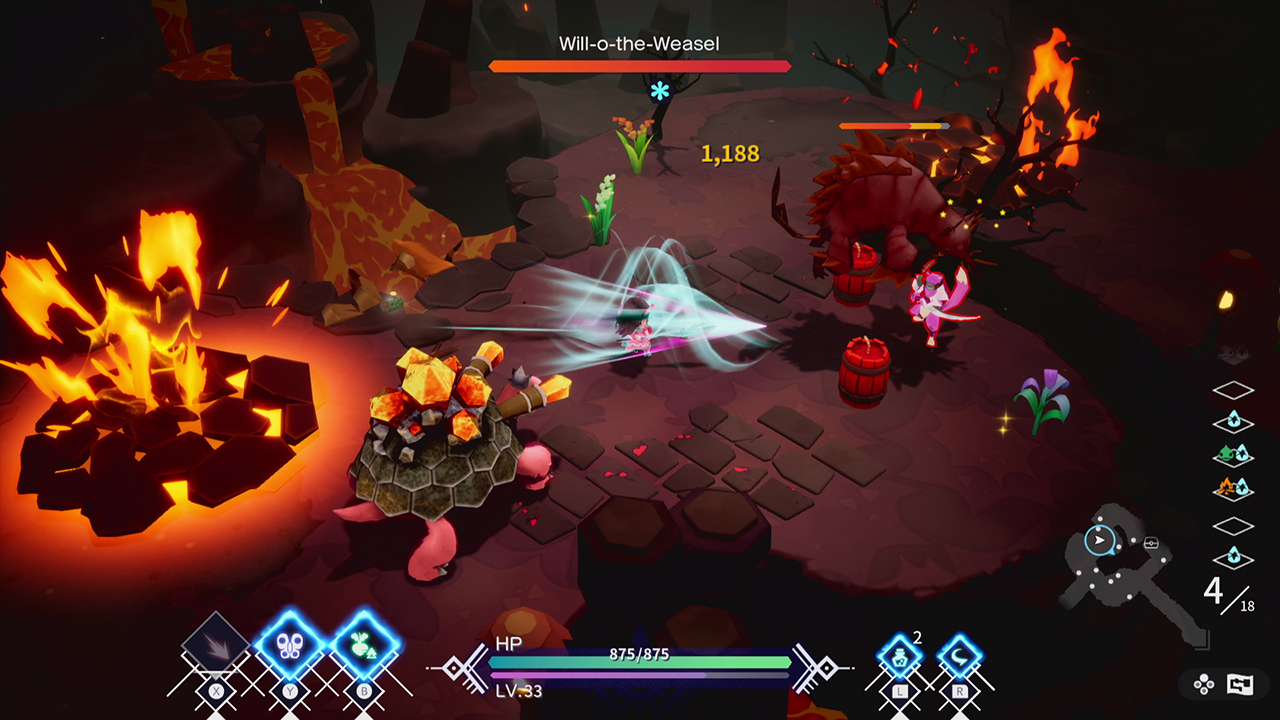
Silent Hope ultimately feels more like a first step than a complete package. Certain elements are completely engrossing, and the core gameplay is often addictive, but its missteps are many and tiny. Like a machine where all the blueprints are drawn right, but the parts assembled aren’t quite high quality enough to truly snuff it. I do hope the game gets a followup, because with some tweaks to the balancing, more involvement in the Base Camp, and more proper sense of characterization there are the ingredients for a truly great game here. But as it is, it’s undercooked. I’d recommend it if you’re a fan of either Diablo style loot RPGs or Mystery Dungeon spelunking roguelites, but if you don’t like those genres then there’s not much for you here. Hopefully a sequel would silence all criticisms.
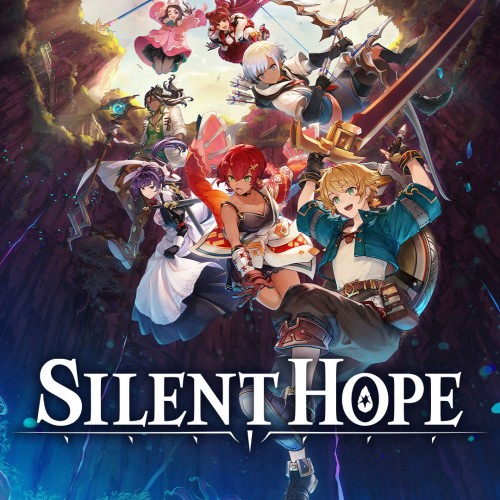
System: Nintendo Switch
Release Date: October 3, 2023
Categories: Action RPG
Publisher: XSEED Games
Developer: Marvelous


